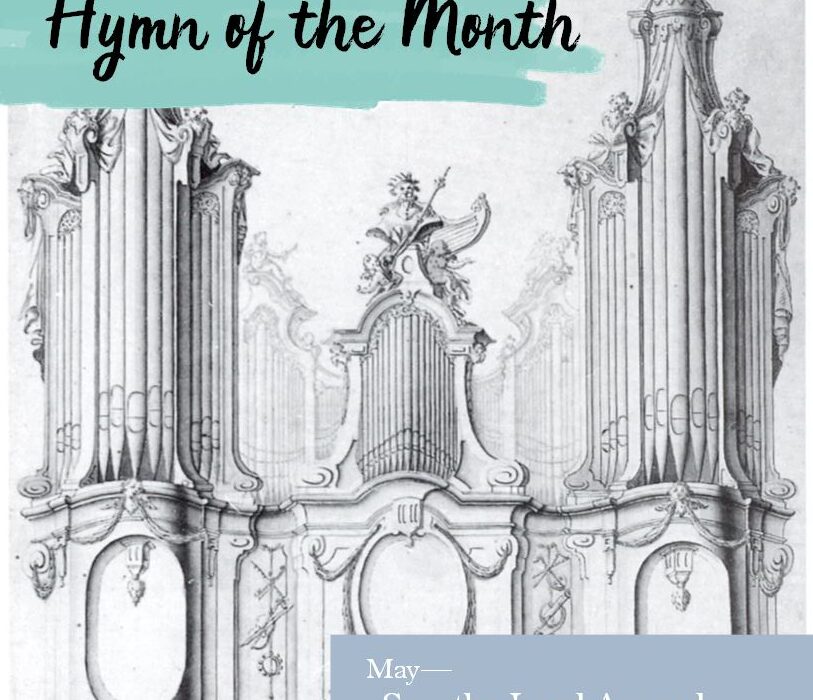Hymn of the Month
See, Our Lord Ascends in Triumph (LSB 494)
Admittedly, the “Ascension” section of our LSB is a bit slim (yes, a grand total of five hymns…). But that faithful little remnant are strong hymns, and they represent the day well by combining poetic retelling of the Ascension story with robust and memorable melodies. One hymn, however, stands out above the others for its intense theological substance.
A nineteenth century Anglican cleric by the name of Christopher Wordsworth wrote our May Hymn of the Month, “See the Lord Ascends in Triumph” (LSB 494). In a style almost similar to a Greek ode, Wordsworth weaves typology, prophecy, and doctrine throughout the familiar account of Christ’s ascension. More than recounting a story, he sets this event in the intricate framework of the Old Testament Scriptures which long foreshadowed the coming Messiah. Beginning with a glorious depiction of Jesus’ return to the right hand of the Father, the hymn already makes allusions to Old Testament imagery: “Riding on the clouds, His chariot” immediately calls to mind the great prophet Elijah. No doubt, Wordsworth addresses us in the first stanza as though we are the disciples watching the miraculous ascent—disciples on whom these Scriptural references would certainly not be lost. In forty days, their despair on Good Friday has been utterly transformed into joy beyond joy, for now they witness the conquering Victor make jubilant return to the heavenly kingdom; and now, all the Old Testament finally makes sense.
Stanza two traces us back through the drama of the Triduum, showing how it must have been that this “Lord of battles, God of armies” (Lord of Sabaoth, anyone?) should die and rise again in order to conquer our ancient foes: “He has vanquished sin and Satan; He by death has crushed His foes.”
In stanza three, the typology begins in earnest: Jesus is depicted as Jacob and Aaron, lifting His hands in blessing (Genesis 27, Numbers 6), and that mysterious figure Enoch, who we read in Genesis “walked with God” and then was translated into heaven (Genesis 5). The next stanza continues by calling Christ our “heavenly Aaron,” a reference to Moses’ brother who was the first high priest of Israel (Leviticus 16:1-16). Throughout Israel’s history, it was only the high priest who could enter the Holy of Holies, and then only once a year. Only he could make intercession for the people of God in the sacred place where the presence of God dwelt with man. And now, here, Jesus has become our true High Priest, who enters “With His blood within the veil” (Hebrews 9:6-15). Joshua, the next figure mentioned, actually shares the same name as Jesus, for Joshua and Jesus are the same in Hebrew. It was the Old Testament Joshua who led the children of God into the Promised Land (“Canaan”) after their years of wandering; but Jesus, the new and perfect Joshua, has led His people from the land of slavery into the true Promised Land. The great prophet Elijah is next to be compared, famously offering his disciple (Elisha) a double portion of his spirit (2 Kings 2:9). Jesus, the greater Elijah, has given His Spirit not only in His atoning sacrifice, but now poured out upon His Church for all eternity.
Like Jesus on the road to Emmaus, Wordsworth shows us how all the Old Testament is fulfilled in the person of Christ. And that brings us to the last and best stanza. The original stanza 5 was written in the second person, as a prayer from the singer to his Lord:
Thou hast raised our human nature in the clouds to God’s right hand,
There we sit in heavenly places, there with Thee in glory stand;
Jesus reigns, adored by Angels; Man with God is on the Throne;
Mighty Lord, in Thine Ascension we by faith behold our own.
—Christopher Wordsworth, The Holy Year (London, 1862), p. 100.
Whether we use the beautiful prayer in the original, or the third-person revision in our hymnal, this is a remarkable stanza! Often overlooked in the Ascension story is the very heart and meaning of the Ascension: you see, Jesus didn’t ascend to take His rightful place as God, as though re-assuming a position He vacated for a while but now is come back to; rather, Jesus ascended to the right hand of the Father to take His rightful place as Man.
God took on our human nature not simply to share an experience and be relatable, like an estranged dad playing ball with his kids (which, surely, no one would complain if the Almighty did that much alone!); but He came to undo the ancient divorce we tendered in our original sin. We who were meant to be one with Him, even as a husband and wife are one, despised His love and severed our holy union. In that, mankind forsook his own humanity, for the purpose and completion of mankind is union with God. We sabotaged our own essence!
Therefore, God became Man.
Jesus took on our flesh not to condescend as some magnanimous divinity, but to draw us back into union with God—to restore our humanity! When Jesus, the True Man, ascends to heaven, He is drawing all who are united to Him into the eternal Life of the Trinity.
The Ascension is the completion of the redemption story, for in it, Mankind is made into who God always meant us to be: His image and likeness, forever united to Him.
Stanza five portrays this deeply meaningful nexus of theology and anthropology in beautiful simplicity. “He has raised our human nature… Man with God is on the throne. By our mighty Lord’s ascension We by faith behold our own.”
Amen and amen!



